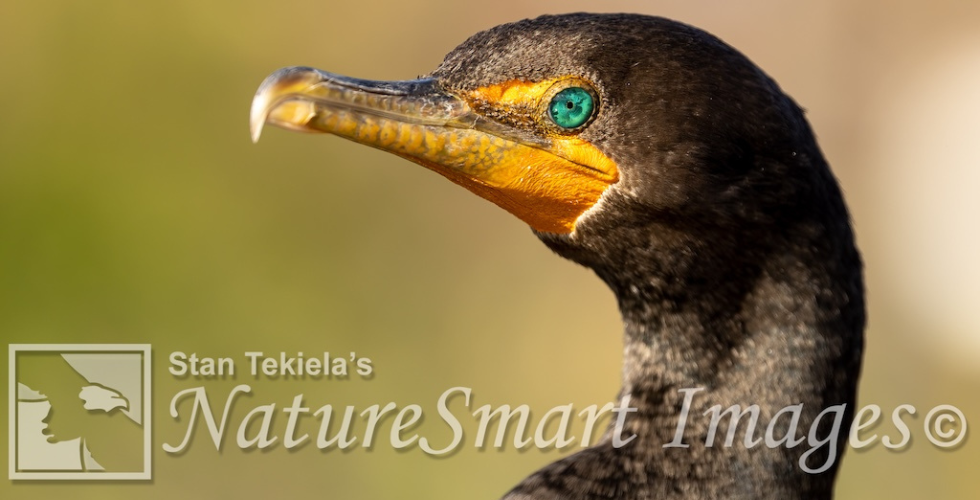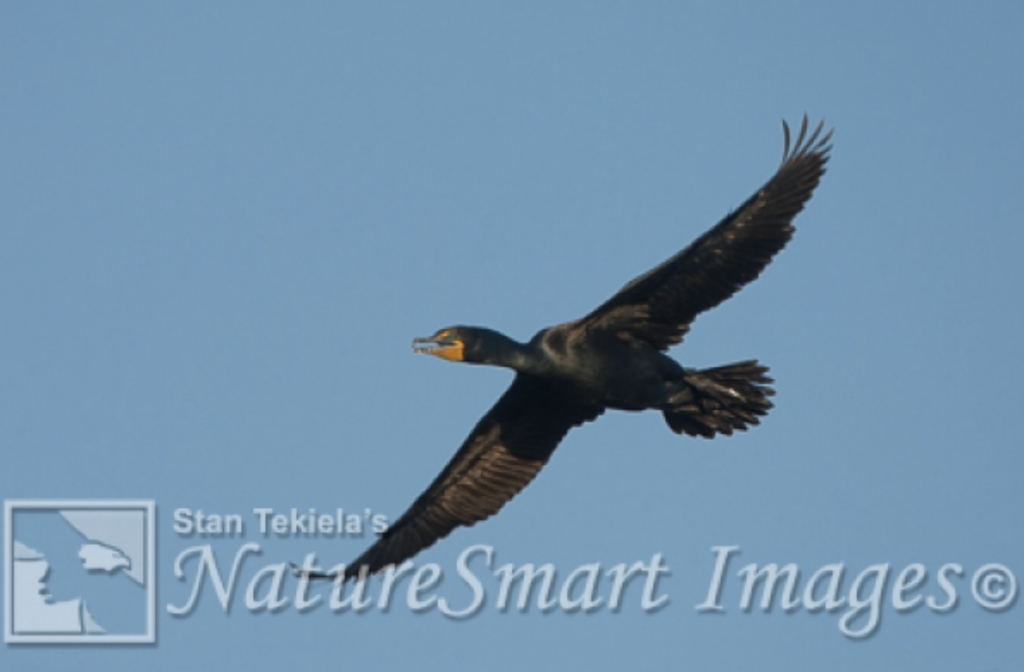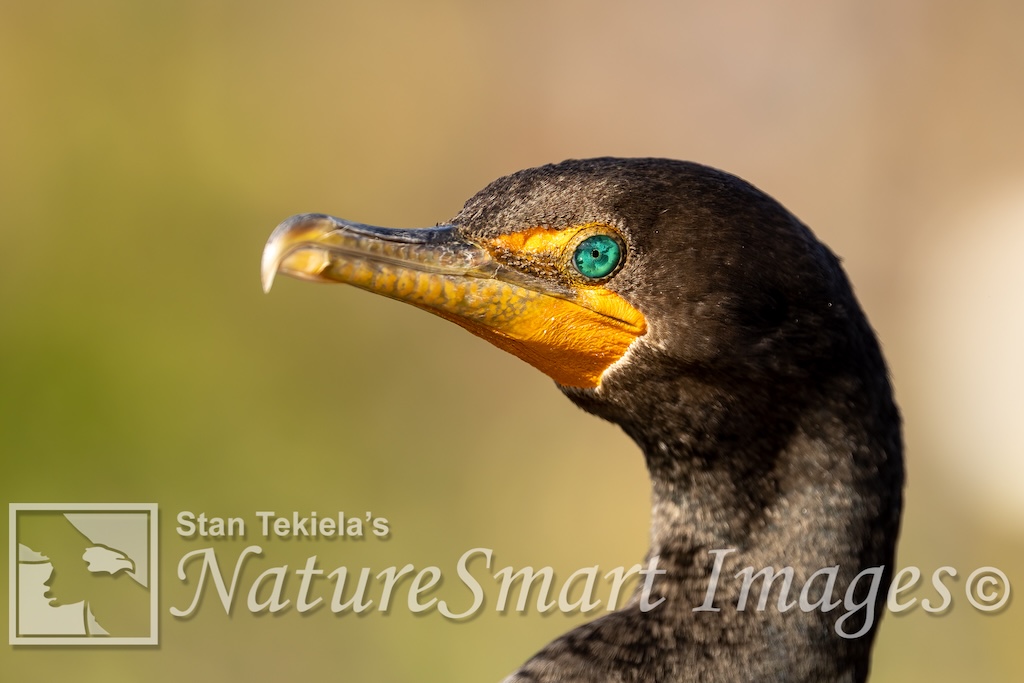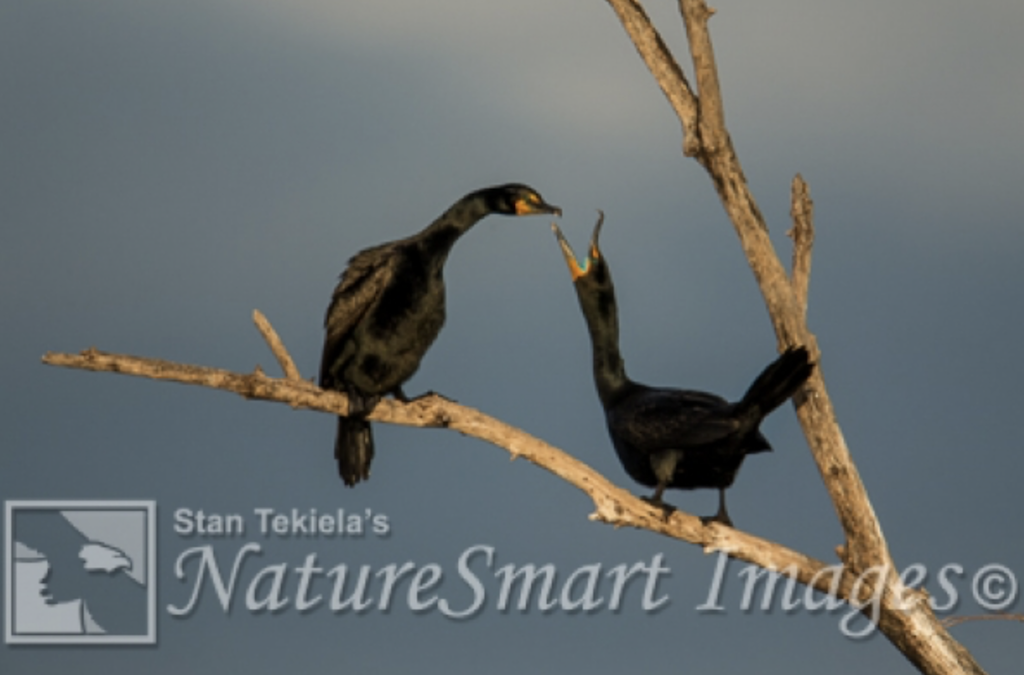
The Double-crested Cormorant—An Example of Birds People Don’t Like
Stan Tekiela shares with us why the double-crested cormorant is an example of a bird species that’s disliked by many people. See if he can change your mind!
We people love to assign blame or shame, no matter the situation, and this includes our view of nature. There are several species that people don’t seem to like at all, based on nothing other than our desire to assign blame. The double-crested cormorant (Nannopterum auritum) is a classic example.
These birds have been vilified and persecuted by people going back hundreds of years. For example, Elizabeth the First, the Queen of England, declared this bird to be a pest and put out a bounty on cormorants in the late 1500s. She said they were pests and needed to be eliminated.

To add to this, many books, movies, and poems all depict the cormorant as a bad bird associated with the devil. With this kind of bad press, you can see why this bird is hated even by those who don’t know anything about it. So, let’s learn a few things about the cormorant.
There are many different species of cormorant, approximately 40 in the world. The most common in North America is the double-crested cormorant, so let’s learn about this one. The double-crested cormorant is a large, all-black waterbird with large, webbed feet and an impressively large, hooked bill. They weigh only about 2-5 pounds. They have a yellow patch of skin under their lower bill, called gular skin. They have sparkling blue eyes and a blue lining in the mouth, which isn’t very common in birds.
The common name “double-crested” refers to special feathers on either side of the head that can stand up and away from the head, so it looks like they have two crests. They don’t display these crests very often, so most people never see them, which also contributes to the misunderstanding of this bird.

They have relatively short wings, but they are still very strong flyers. Their bill is long and thin, with a strong down-curving tip called the nail. They use their bill to catch fish underwater. They use their large, webbed feet to propel them through the water, leaving their wings folded at their sides. So they don’t “fly” through the water. They are true swimmers.
After spending time underwater, the cormorant often sits out in the sun to dry out. Cormorant feathers, more specifically the contour feathers that cover the bird’s body, are different from other birds. At the base of the feather the structure is tight and repels water, but the outer part of the feather is open and absorbs water, rather than shedding it. So part of the feather gets waterlogged. This helps the bird stay underwater with less effort, allows it to be more agile and increases maneuverability. After all, they need to overtake fish underwater to catch something to eat.

In the past, it was assumed that cormorants didn’t have the oil-producing gland near the base of their tail called the preening gland. The oil excreted from the gland was believed to give birds their waterproofness. Now we know that it is the feather structure that makes a bird waterproof. Recent studies show that cormorants do have the preening gland, and it’s fully functional. So, once again, we were wrong after making assumptions about bird behaviors.
More recent studies show that birds who are “sunning” themselves might be doing more than just drying feathers. There is some evidence that the birds are using the sun to raise their body temperatures and thus increase their digestion rate. Others suggest that the increased UV light from the sun helps them break down and digest their food. Whatever the reason, I hope we have learned that making quick assumptions or playing the quick blame game is often proven wrong.
If you enjoyed Stan’s post, you might also like: Cranes, Herons & Egrets, Bird Migration: The Incredible Journeys of North American Birds, Wild Birds: North America’s Most Unique Birds, Bald Eagles: The Ultimate Raptors, Owls: The Majestic Hunters, Hummingbirds: Marvels of the Bird World, and, for little tykes, his series of Mamas & Babies board books.
For news on all our books, sign up for our newsletter. #bewellbeoutdoors


